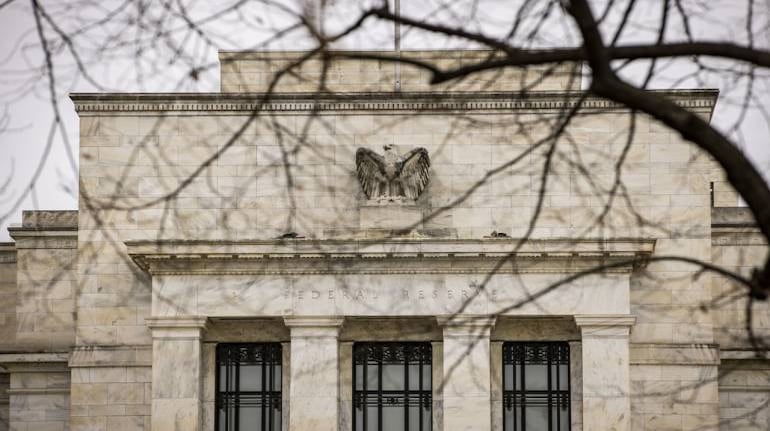



When the Federal Reserve is on a rate hiking mission, it normally keeps doing so until something breaks, or so goes the collective wisdom on Wall Street.
The collapse of two big banks, California-based Silicon Valley Bank (SVB) and New York-headquartered Signature Bank, the second and third-largest bank failures in US history, has over the past few days created pandemonium in the stock markets. Credit Suisse was bought out by UBS in a Swiss government-brokered deal.
Also read: UBS-Credit Suisse deal averts worse global crisis, but puts Indian job market at risk
US regional banks have been losing ground, with fears of more failures refusing to go away. Now, would this count as a breaking point from where the Fed could actually pause or pivot from its rate-tightening cycle? That is the perverse outcome the stock markets have been wishing for since the tightening cycle started.
But no, there is no conclusive evidence that would actually happen.
Despite the fact that rising bond yields proved to be the death knell for SVB, which ran up some $16 billion in unrealized losses on its treasuries, the Fed may not be willing to relent just yet. For a brief period last week, markets were expecting a 50 basis point move, following remarks by Fed Chair Jerome Powell indicating the US central bank was concerned about recent hot inflation data.
But that expectation now stands changed. A majority of market participants are betting on a 25 basis point hike tonight. One basis point is one-hundredth of a percentage point.
Among the notable voices, Goldman Sachs is one of the very few firms which expects the Fed to actually take a breather from the hikes. It does not anticipate any hike at all this month, and expects the Fed to prioritise financial stability for now. Both Bank of America and Citigroup said they expect the Fed to hike the rate by 25 basis points and continue on the inflation-fighting path.
With inflation still at 6 percent, significantly above the Fed’s target, and the labour market stronger than it has been for more than 50 years, there is still a strong case for tightening rates.
Some market participants say that if the Fed does indeed pause, it will not send the right signal to the markets as it has already been late in fighting inflation, having called it transitory for the longest time and allowing it to become a bigger problem.
This view was articulated best by Citigroup economist Andrew Hollenhorst, who wrote in a note: “Fed officials are unlikely to pivot at next week’s meeting by pausing rate hikes. Doing so would invite markets and the public to assume that the Fed’s inflation-fighting resolve is only in place up to the point when there is any bumpiness in financial markets or the real economy.”
Also read: Global banking crisis adds to woes of IT firms, slowdown expected in the near term
Citi, in fact, sees the Fed continuing to raise its benchmark funds rate to a target range of 5.5 percent-5.75 percent, well above the market pricing of 4.75 percent-5 percent.
Market expectations are one thing, but will a hike not escalate risks – real or imaginary – of further financial stability? More likely not. That’s because after the SVB episode, the regulators unveiled sweeping intervention to try and prevent panic from spreading across the broader financial system, with the Treasury, Federal Deposit Insurance Corporation (FDIC) and the Fed acting in concert.
Apart from assuring that depositors at the failed banks will be paid back in full, the Fed announced an emergency lending programme to help funnel cash to banks facing steep losses on their holdings because of the rise in interest rates.
The entire banking system in the US was sitting on unrealized losses of $620 billion in sovereign bonds at the end of 2022, according to the FDIC.
While the Fed’s lending programme should help specific banks in stress, the banking system as a whole in the US has assets in excess of $23 trillion which means that this is not a problem the system can not absorb. There could surely to stress in the pockets where certain banks may face a liquidity crisis if too many depositors withdraw their money, and the bank has to scramble to get cash or sell securities at a loss. But that’s where the Fed’s emergency lending arrangement will help.
But that’s where the Fed’s new Bank Term Funding Programme will help. This window will allow banks and other depository institutions to access loans of up to one year by pledging US treasuries, agency debt and mortgage-backed securities, and other qualifying assets as collateral. These assets will be valued at par, so institutions do not have to go out in the market and sell securities at a loss in times of stress.
Also read: GMO co-founder warns of 50% stock decline in next market phase
This arrangement is in fact seen as a sort of insurance policy that could allow the central bank to continue raising rates without causing further dislocations. This is a point made by Steven Kelly, senior research associate at Yale’s program on financial stability, who was quoted by The New York Times as saying: “The Fed has basically just written insurance on interest-rate risk for the whole banking system. They’ve basically underwritten the banking system, and that gives them more room to tighten monetary policy.”
Discover the latest Business News, Sensex, and Nifty updates. Obtain Personal Finance insights, tax queries, and expert opinions on Moneycontrol or download the Moneycontrol App to stay updated!
Find the best of Al News in one place, specially curated for you every weekend.
Stay on top of the latest tech trends and biggest startup news.